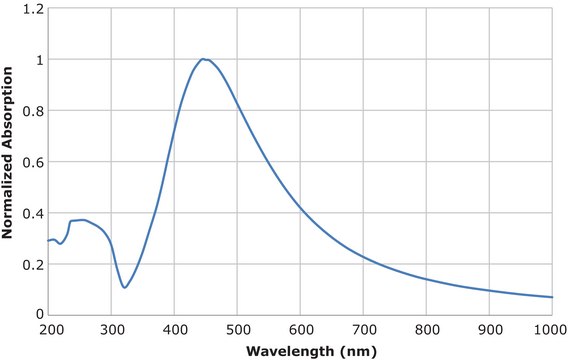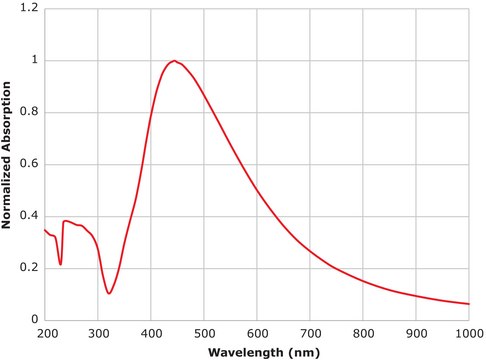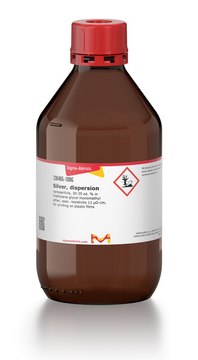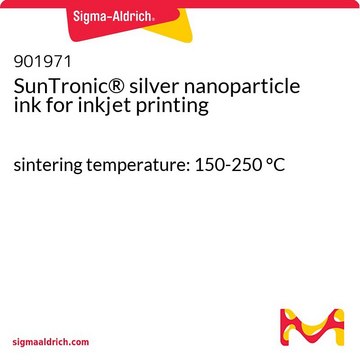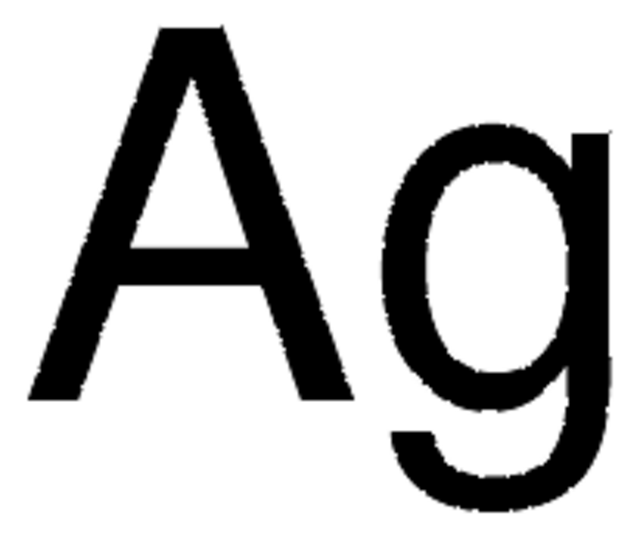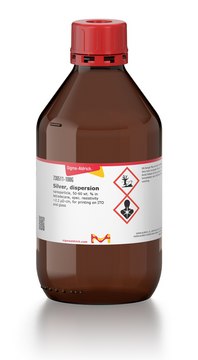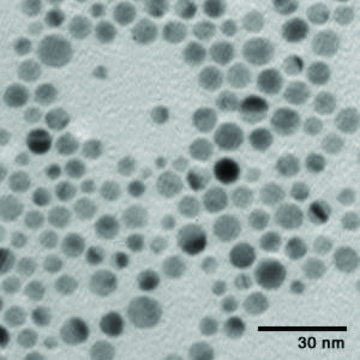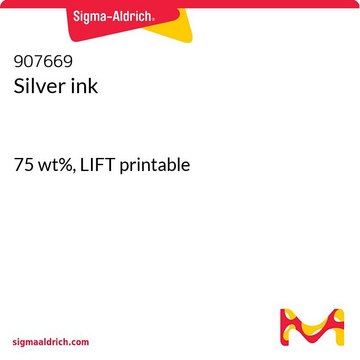719048
Silver nanoparticle ink
<150 nm particle size (DLS), 20 wt. % (dispersion in organic solvents)
Synonym(s):
SunTronic® Silver, Ag ink, Conductive ink, Silver ink
About This Item
Recommended Products
form
dispersion
concentration
in ethanol and ethanediol
20 wt. % (dispersion in organic solvents)
particle size
<150 nm (DLS)
surface tension
28.0-31.0 dyn/cm
viscosity
10-13 cP
density
1.22 g/mL at 25 °C
storage temp.
2-8°C
SMILES string
[Ag]
InChI
1S/Ag
InChI key
BQCADISMDOOEFD-UHFFFAOYSA-N
Looking for similar products? Visit Product Comparison Guide
General description
Physical properties
Other Notes
Legal Information
Signal Word
Danger
Hazard Statements
Precautionary Statements
Hazard Classifications
Acute Tox. 4 Oral - Aquatic Acute 1 - Aquatic Chronic 1 - Eye Irrit. 2 - Flam. Liq. 2 - STOT RE 2 Oral
Target Organs
Kidney
Storage Class Code
3 - Flammable liquids
WGK
WGK 3
Flash Point(F)
72.0 °F - closed cup
Flash Point(C)
22.2 °C - closed cup
Regulatory Information
Choose from one of the most recent versions:
Already Own This Product?
Find documentation for the products that you have recently purchased in the Document Library.
Our team of scientists has experience in all areas of research including Life Science, Material Science, Chemical Synthesis, Chromatography, Analytical and many others.
Contact Technical Service